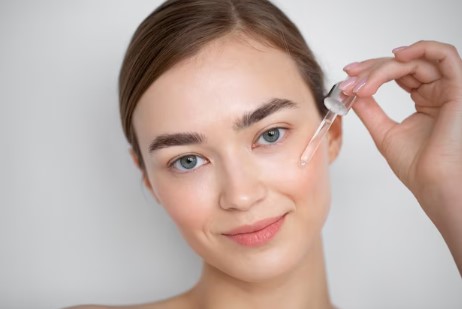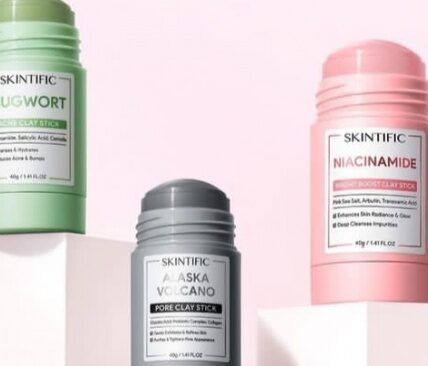Why Face Serum Are Essential for Your Skincare Routine
In recent years, face serums have become a staple in skincare routines across the globe. Known for their lightweight yet potent formulations, serums deliver targeted treatment for various skin concerns such as aging, hyperpigmentation, and dehydration. But with so many options available, understanding what a face serum does, how it works, and which one is right for you can be a bit overwhelming. In this blog, we will take a deep dive into everything you need to know about face serums and why they are a must-have in your skincare arsenal.
What is a Face Serum?
A face serum is a skincare product designed to deliver high concentrations of active ingredients directly into the skin. Unlike heavier creams or lotions, serums are typically lightweight, fast-absorbing, and more effective at targeting specific skin concerns. Whether you’re dealing with fine lines, dullness, or uneven texture, there is likely a serum formulated to address your needs.
Serums are usually applied after cleansing and before moisturizing, allowing the potent ingredients to penetrate deep into the skin for maximum efficacy.
Why Use a Face Serum?
If you’re already using a moisturizer, you might wonder why you need a serum at all. Here’s why serums are essential:
- High Potency: Serums are more concentrated than other skincare products, meaning they pack a powerful punch when it comes to addressing specific skin issues.
- Deep Penetration: Thanks to their lightweight formulas, serums are able to penetrate deeper into the skin, delivering active ingredients more effectively than creams or lotions.
- Targeted Treatment: Whether you’re looking to hydrate, brighten, or smooth your skin, there’s a serum that focuses on your specific concerns.
- Layering: Serums are designed to be layered under other skincare products, allowing for a more customized and effective skincare routine.
Types of Face Serums and Their Benefits
There are various types of face serums available, each catering to different skin types and concerns. Here’s a breakdown of the most common serums and what they do:
- Hydrating Serums
- Key Ingredients: Hyaluronic acid, glycerin, ceramides
- What They Do: Hydrating serums are designed to provide moisture to the skin, helping to plump and smooth out fine lines. Hyaluronic acid, for example, can hold up to 1,000 times its weight in water, making it a superstar for dry or dehydrated skin.
- Anti-Aging Serums
- Key Ingredients: Retinol, peptides, antioxidants
- What They Do: Anti-aging serums are formulated to combat signs of aging like fine lines, wrinkles, and sagging skin. Retinol, a derivative of vitamin A, is known for its ability to boost cell turnover and promote collagen production, leading to smoother, more youthful-looking skin.
- Brightening Serums
- Key Ingredients: Vitamin C, niacinamide, licorice root extract
- What They Do: Brightening serums work to improve skin tone and diminish dark spots, leaving your complexion more radiant and even. Vitamin C is a popular ingredient in these serums due to its ability to fight free radical damage and lighten hyperpigmentation.
- Exfoliating Serums
- Key Ingredients: Alpha hydroxy acids (AHAs), beta hydroxy acids (BHAs), lactic acid
- What They Do: Exfoliating serums help slough off dead skin cells, unclog pores, and improve skin texture. Regular use of these serums can lead to smoother, brighter skin and fewer breakouts.
- Antioxidant Serums
- Key Ingredients: Vitamin E, resveratrol, green tea extract
- What They Do: Antioxidant serums are designed to protect the skin from environmental damage caused by free radicals. Free radicals contribute to premature aging and damage skin cells, so using a serum rich in antioxidants can help neutralize their effects.
- Anti-Redness or Calming Serums
- Key Ingredients: Aloe vera, chamomile, centella asiatica
- What They Do: For those with sensitive or irritated skin, calming serums help to reduce redness, soothe inflammation, and restore the skin’s natural balance. These serums are typically very gentle and free from harsh chemicals or fragrances.
How to Choose the Right Face Serum for Your Skin Type
Choosing the right serum can make all the difference in your skincare routine. Here’s how to pick a serum based on your skin type and concerns:
- Dry Skin
- Recommended Ingredients: Hyaluronic acid, glycerin, squalane
- Why: Dry skin benefits from a hydrating serum that helps lock in moisture and prevent flakiness or tightness.
- Oily or Acne-Prone Skin
- Recommended Ingredients: Salicylic acid (BHA), niacinamide, tea tree oil
- Why: For oily skin, a serum that controls oil production and clears out pores is essential. Look for lightweight, non-comedogenic serums that won’t clog your pores.
- Sensitive Skin
- Recommended Ingredients: Aloe vera, chamomile, centella asiatica
- Why: Serums with soothing ingredients are key for sensitive skin to prevent irritation and redness. Always opt for fragrance-free and hypoallergenic formulas.
- Mature Skin
- Recommended Ingredients: Retinol, peptides, antioxidants
- Why: Anti-aging serums with ingredients like retinol and peptides can help firm the skin, reduce fine lines, and increase elasticity, giving you a more youthful appearance.
- Combination Skin
- Recommended Ingredients: Niacinamide, vitamin C, hyaluronic acid
- Why: A serum that balances oil and moisture levels is ideal for combination skin. Look for lightweight hydrating serums that won’t weigh down your T-zone but will still provide adequate hydration for drier areas.
How to Use a Face Serum in Your Routine
Adding a serum to your routine is easy, but it’s important to use it correctly to get the most benefit. Here’s how to incorporate it into your daily regimen:
- Cleanse Your Skin: Start by cleansing your face to remove any dirt, oil, or makeup. This ensures that the serum can penetrate deeply without being blocked by surface impurities.
- Apply Toner: If you use a toner, apply it after cleansing to prep your skin and balance its pH.
- Use the Serum: Dispense a few drops of serum into the palm of your hand, then gently pat or press it into your skin. Avoid rubbing, as this can cause irritation.
- Moisturize: Follow up with a moisturizer to lock in the serum and provide an extra layer of hydration.
- Sunscreen (AM Routine): If you’re applying serum in the morning, always follow with a broad-spectrum sunscreen to protect your skin from UV damage.
Common Serum Mistakes to Avoid
- Using Too Much Product: Serums are highly concentrated, so you only need a few drops. Using too much can overwhelm your skin and lead to irritation.
- Mixing Incompatible Ingredients: Some ingredients don’t play well together. For example, using retinol and vitamin C at the same time can be too harsh for your skin. Layer them in different parts of your routine or use them on alternate days.
- Skipping Sunscreen: Many active ingredients, like retinol and AHAs, can make your skin more sensitive to the sun. Always use SPF after applying a serum in the morning.
Conclusion: Why Face Serums Are Essential for Healthy Skin
Face serums are one of the most versatile and effective skincare products you can include in your regimen. Whether you’re looking to hydrate, brighten, or combat aging, there’s a serum formulated just for you. Incorporating a serum into your daily skincare routine can result in noticeable improvements, giving you the radiant, healthy skin you desire.


















